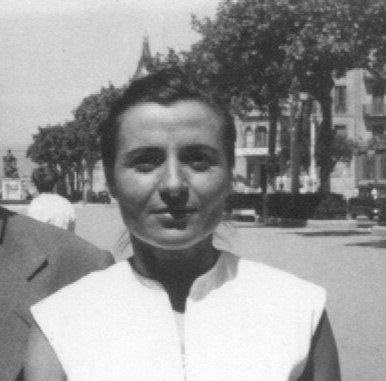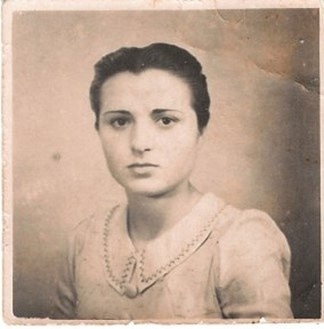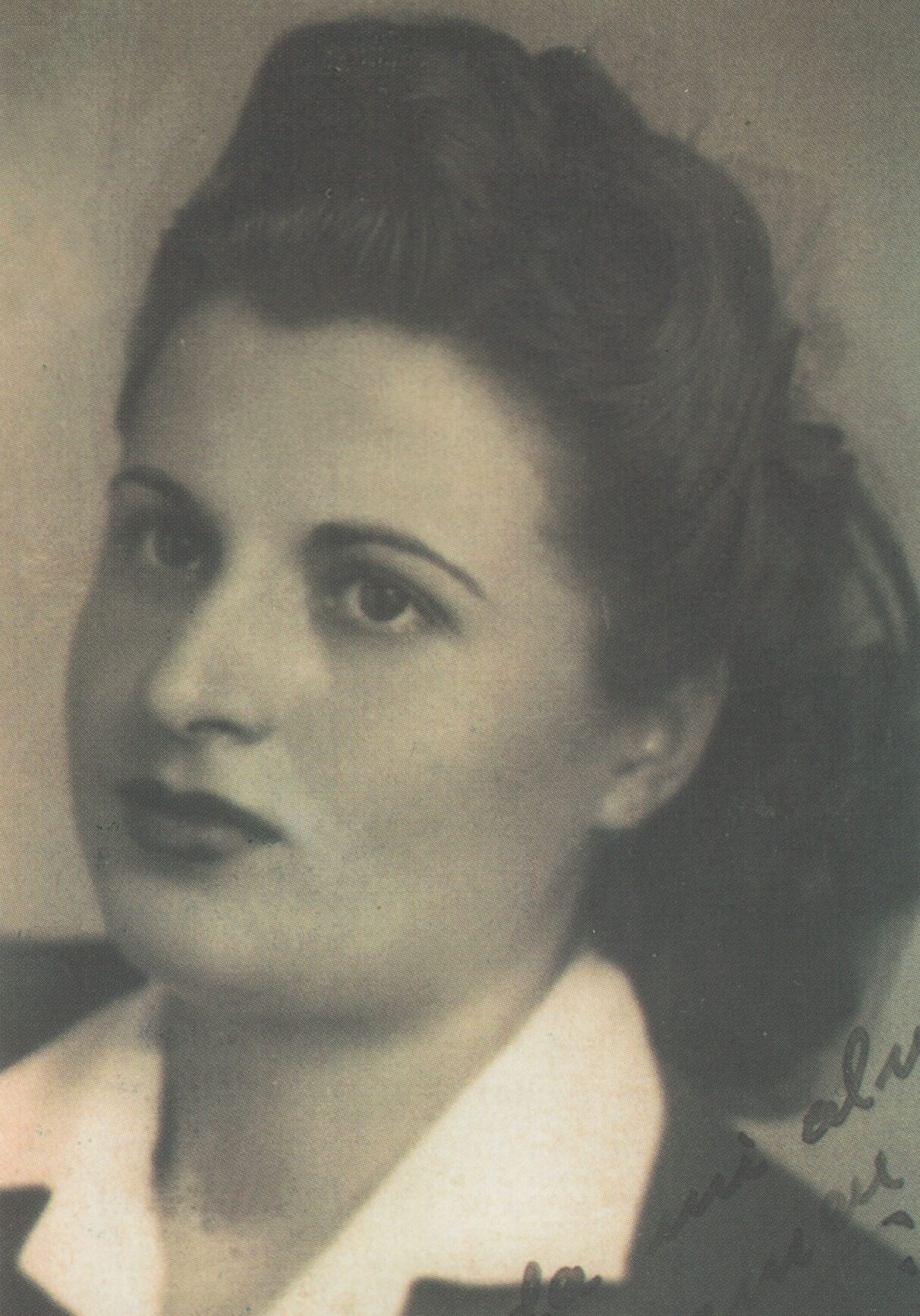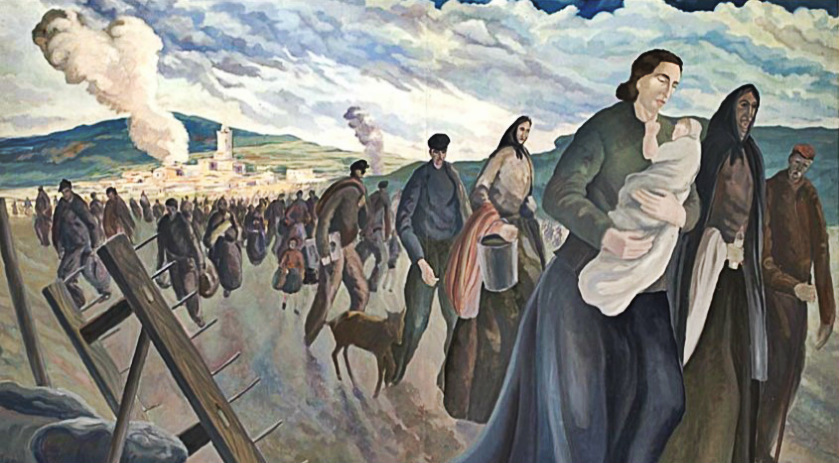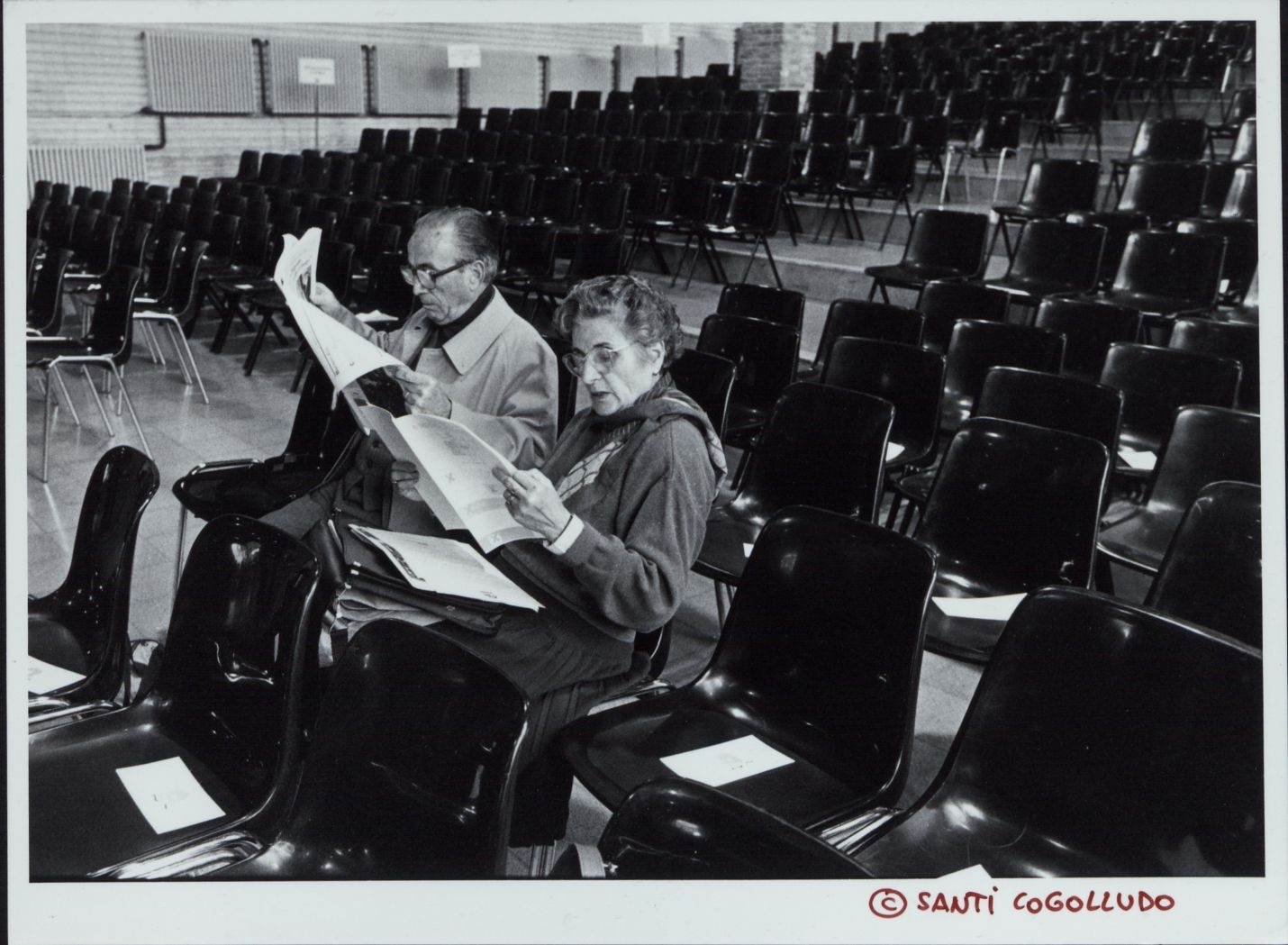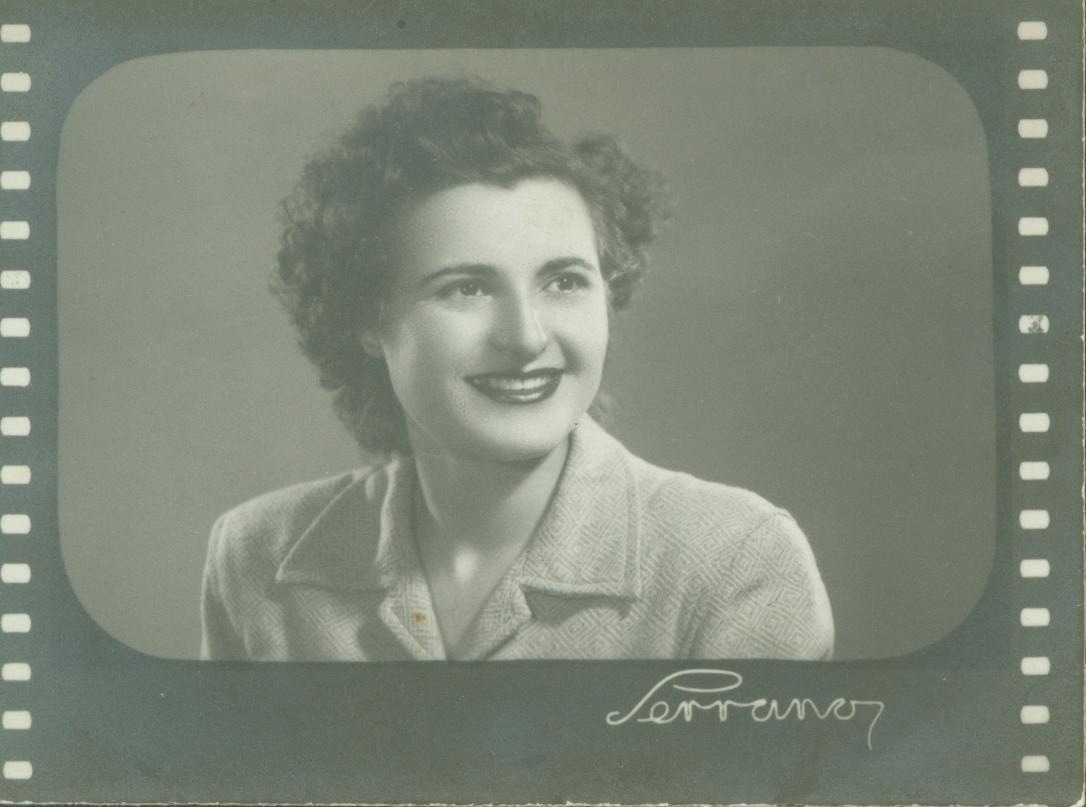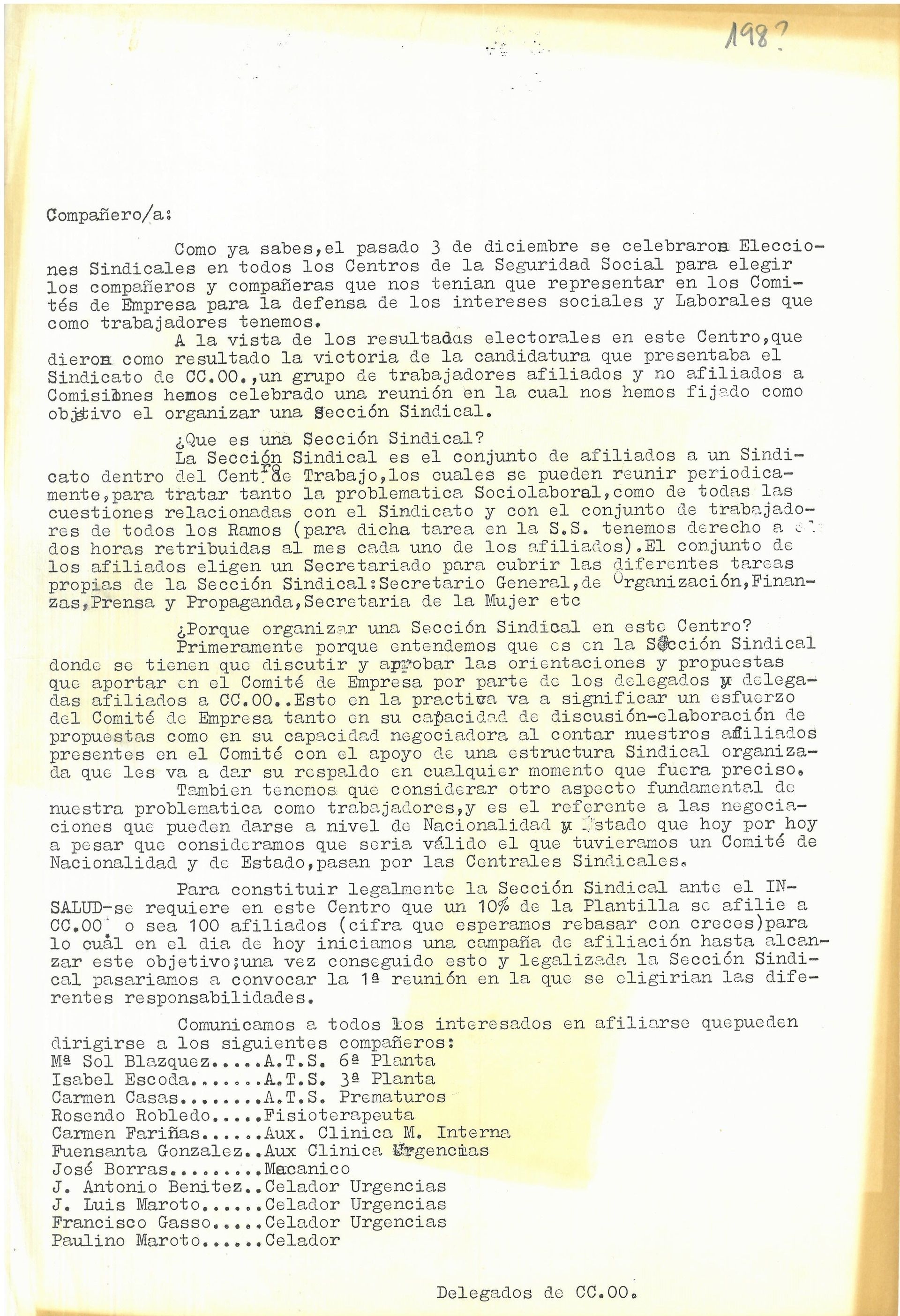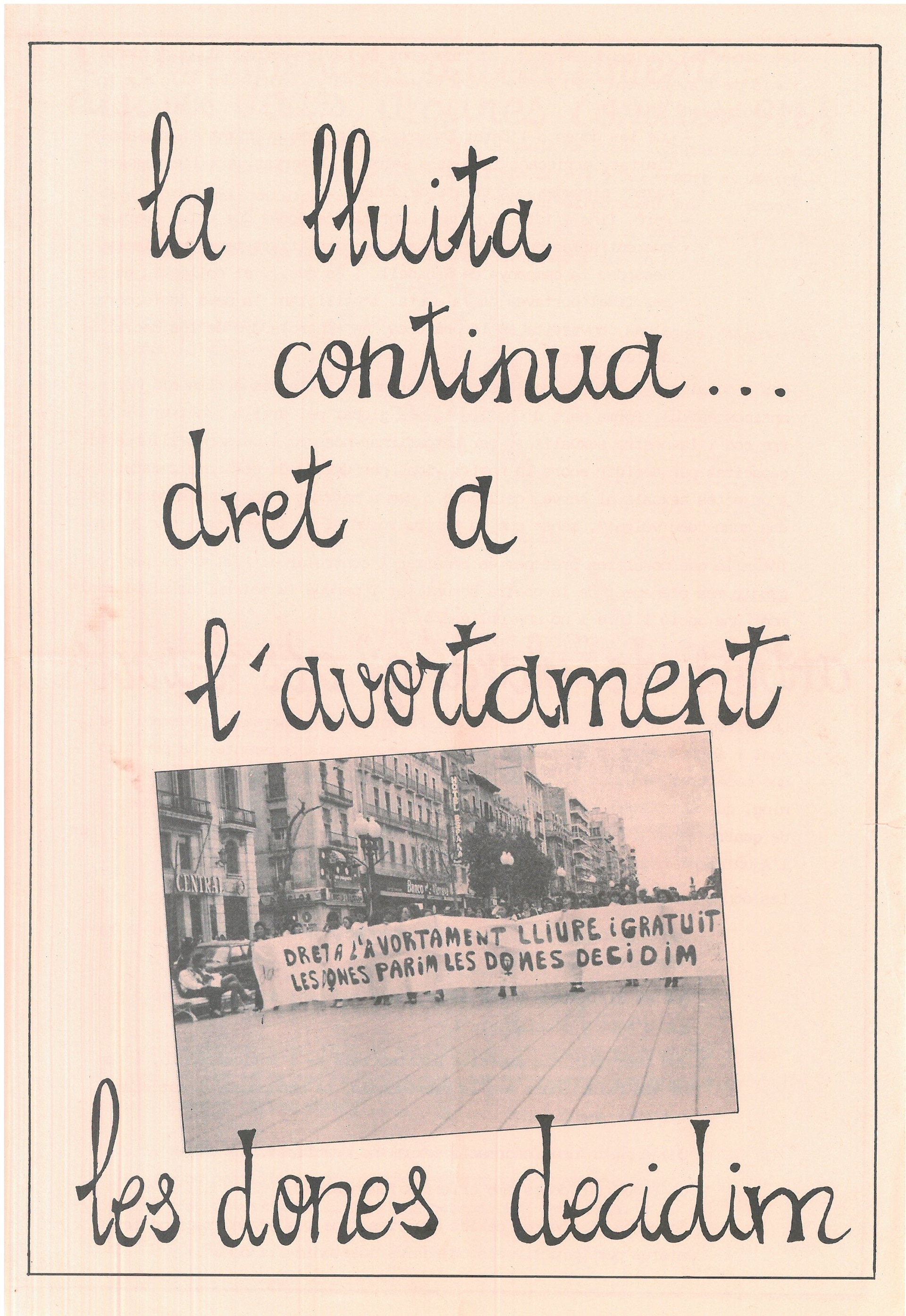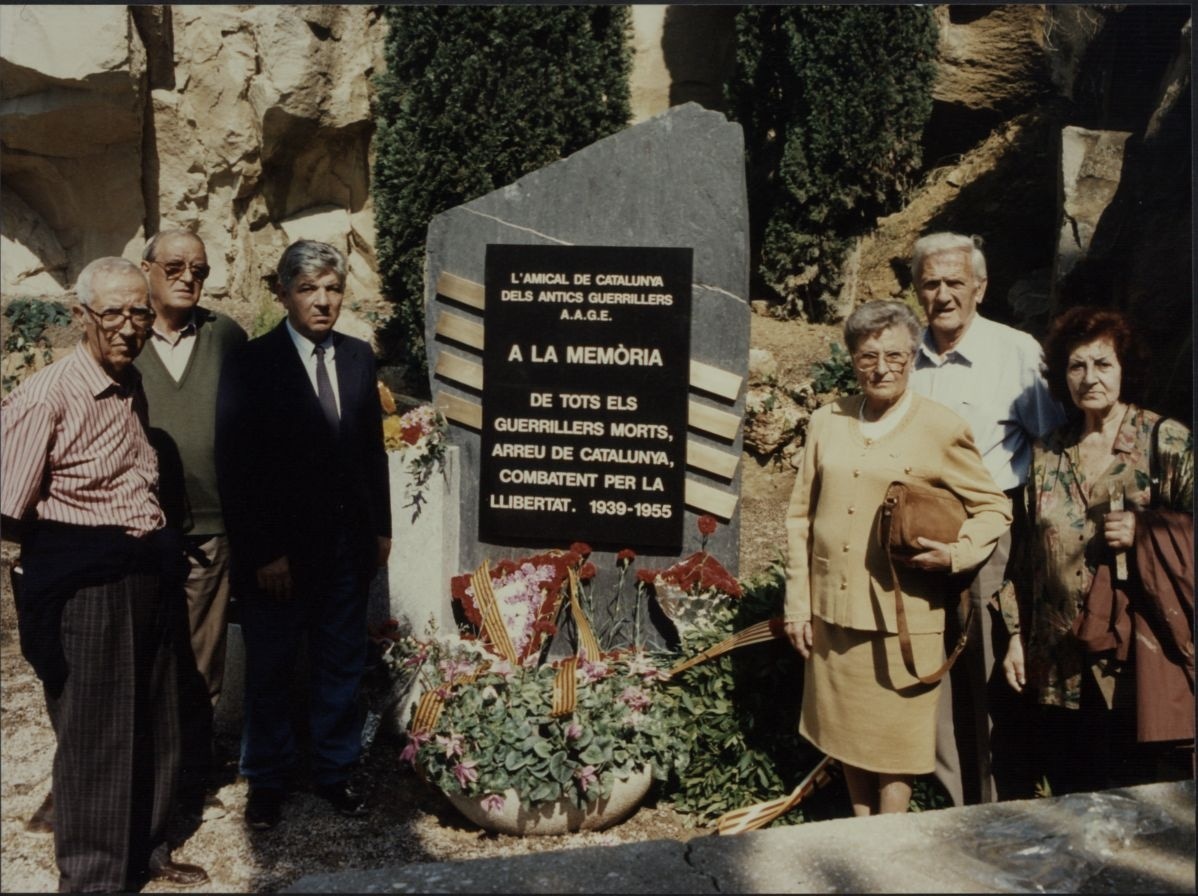The road to exile
Carme had to leave with her classmates and other students, fleeing from Manresa to Figueres, completely alone and with almost nothing to wear. “The train was already full from far back the line, and we had to make room for all the people who were going to Figueres, we travelled like this… like sardines in a tin, with no luggage, with no friends, not knowing where we were going and thinking: ‘Where are my parents? Where will I go?’ And also thinking, ‘If you leave, you can come back, but if you stay, will you be able to get out…?’”
In her daughter’s words: “There, she lost contact with her travel companions and lost her suitcase, her luggage, everything. And she found herself on a train to France alone. When she arrived in France, she was taken care of by the French. She lived in different places and got involved in the kind of political activities that were taking place at that time”. She got as far as Arras, in the French department of Aube. There, and thanks to the French Communist Party, she was found by her father. Carme managed to reunite with her parents and sisters, who were interned in the camp of Saint Chely d’Apcher. But they stayed there for quite a short while, since the French government, as a result of the World War, had decided to get rid of some of the existing refugee camps and wanted to regroup the Spanish refugees in fewer locations. In accordance with these regulations, all the members of the Casas family were transferred to the Langogne camp, where they stayed until February 1940. When Jesus was recruited by the French government and was sent to work at the Maginot Line, the women of the family also left the camp and looked for a flat in town. While Carme, her mother and her sisters strived to survive, Jesus managed to dodge the fate of a German arrest at the front and was reunited with his family.
From that moment on –it was already 1941– all the members of the Casas family began to cooperate in the political reorganisation of the Spanish refugees in France. According to Carme’s daughter: “When she was there, she met my father, who was a member of the PCE. My father went back to Spain to reorganise the communist party and the whole maquis struggle and all of that. And my mother came back in 1944, if I remember correctly, because she was being persecuted by the Gestapo”’.

